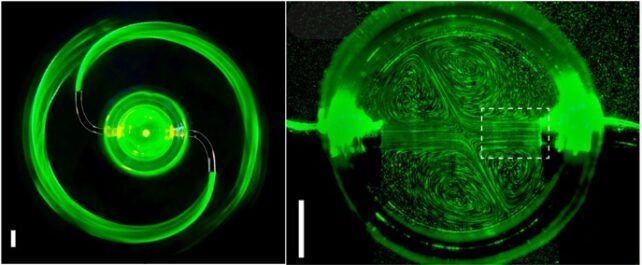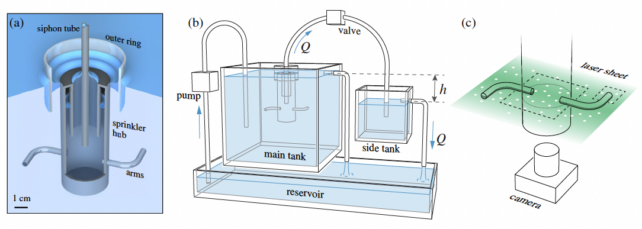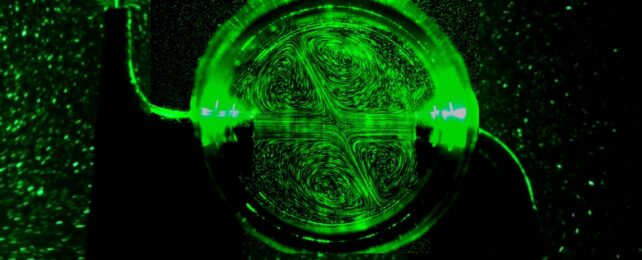For generations, the summer heat has sent kids running through the spiralling streams of water cast from old-fashioned, s-shaped garden sprinklers.
But what would happen to the sprinkler head if it was submerged and sucked in water instead? Would it rotate the same way as a normal sprinkler if the flow was reversed, driven by the force of water gushing in, or spin in the opposite direction as suction draws the rotation forward? Might it stand oddly still?
That's the decades-old problem question made famous by the renowned mid-20th-century physicist Richard Feynman, which has come to be known as Feynman's sprinkler problem.
Now a group of mathematicians think they have finally solved it with a series of lab experiments backed up by mathematical modeling.
They're certainly not the first to try, but it helps that their predictions are validated with experimental results.

In the early 1940s, Feynman was a graduate student at Princeton University who built a makeshift experiment that, according to his colleagues, showed the sprinkler stayed stationary after a few tiny wobbles. Ernst Mach thought similarly in 1883, in the first documented reference to the problem.
Experiments have since produced conflicting results: some show the sprinkler head rotating in the reverse direction; others observed it changing directions erratically or only moving for a brief moment.
New York University physics doctoral student Kaizhe Wang and colleagues put these discrepancies down to the geometry of past experimental set-ups and friction between the rotating shaft and internal bearing, which possibly counteracted other forces.
So, they built a new ultra-low-friction rotary bearing that allowed their custom-made reverse sprinkler to spin freely. The sprinkler had two arms made of curved tubes and a siphon at the top of the cylindrical tube to suck water in when the device was submerged in a water-filled tank.
The device was also designed so that it could run indefinitely, the pump pulling water from a reservoir that the siphoned water flowed into. This allowed the researchers to run their experiments for several hours, longer than previous experiments.

The team also used colored dyes, laser-scattering microparticles, and high-speed cameras, to visualize and record the rotation of the sprinkler and water flows, so they could compare their experimental results to their modeling outputs.
"We found that the reverse sprinkler spins in the 'reverse' or opposite direction when taking in water as it does when ejecting it, and the cause is subtle and surprising," explains Leif Ristroph, New York University mathematician and senior author of the study.
Think of a regular sprinkler as somewhat of a rotating version of a rocket: the sprinkler head is thrust in the opposite direction to the outgoing water jets.

Wang and colleagues discovered that in their reverse sprinkler, the incoming water jets slam into each other in the internal chamber of the sprinkler but don't meet exactly head-on, which generates torque to rotate the hub.
The motion of the sprinkler hub wasn't steady, but it did spin in the opposite direction, albeit 50 times slower than an out-flow sprinkler. (In the video below, the device is prevented from rotating to improve the visualization of the flows.)

"The degree of agreement between the experiment and model results is quite remarkable," McGill University mechanical engineer Michael Païdoussis told Phillip Ball at Physics Magazine.
Other physicists agree the experiments help pin down the mechanics of this fluid problem, which could have some practical applications.
Ristroph says the findings could be applied to engineer technologies to harvest energy from flowing air or water, by generating motion or forces.
"We now have a much better understanding about situations in which fluid flow through structures can induce motion," adds Brennan Sprinkle, a mathematician at the Colorado School of Mines and one of the paper's co-authors.
The study has been published in Physical Review Letters.
